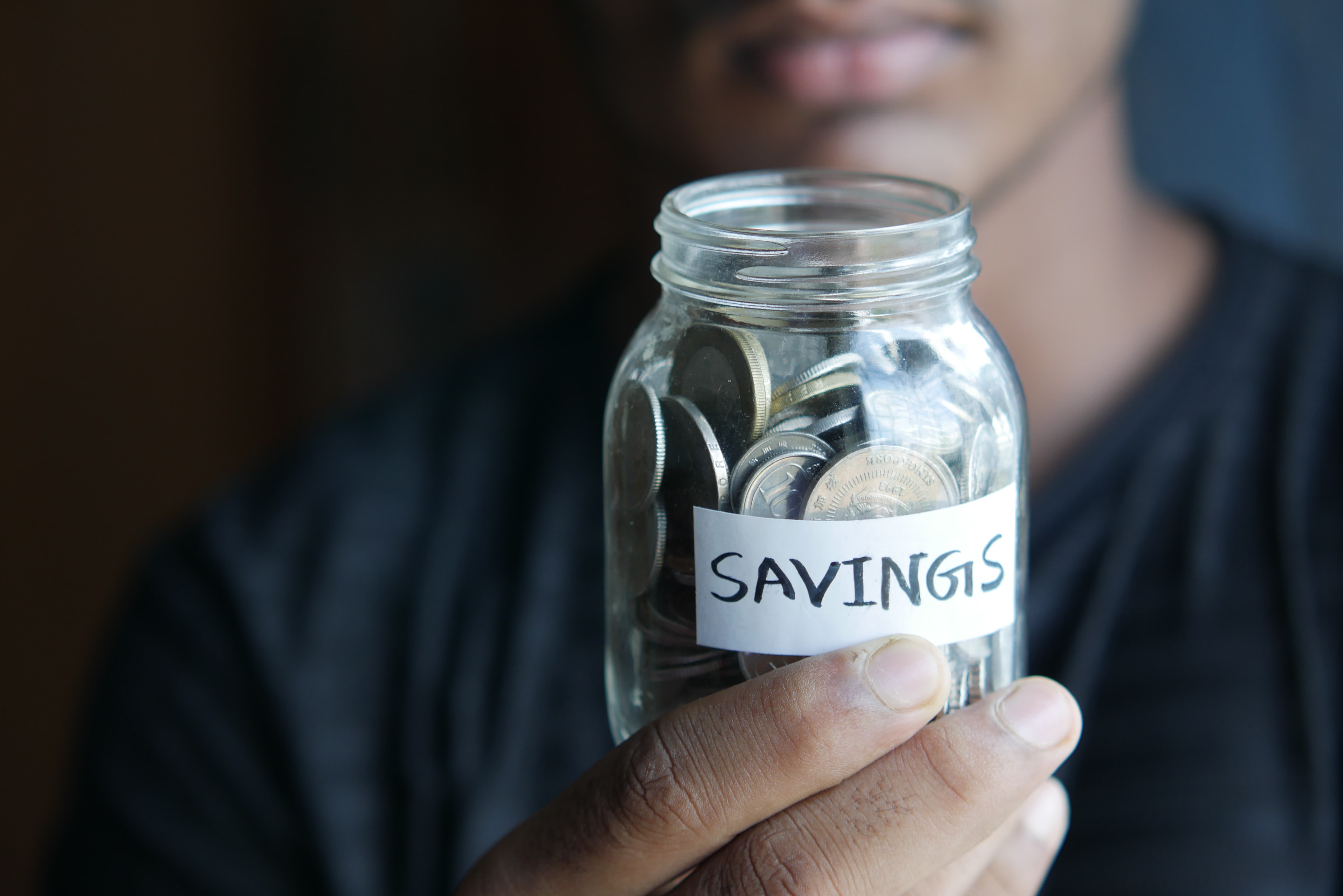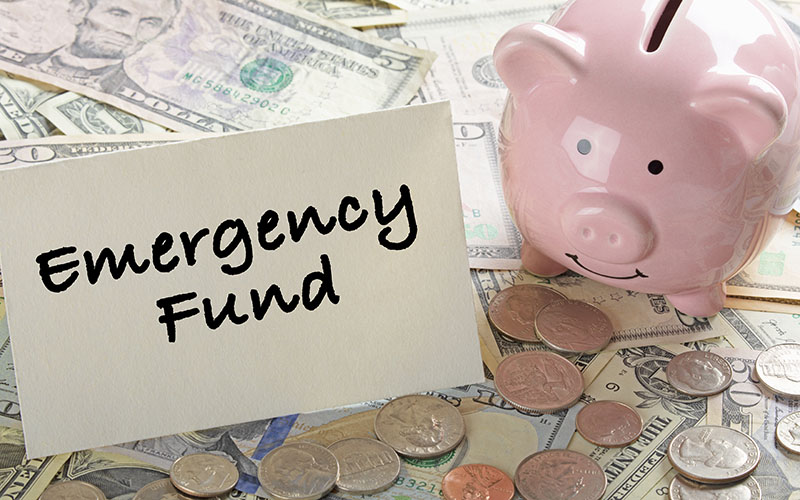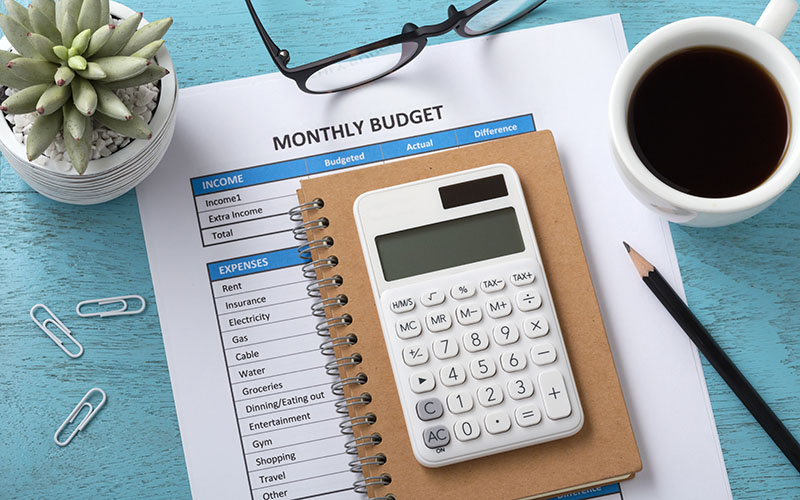The Difference Between Types of Savings Accounts
Key Takeaways
- Savings accounts, money market accounts, and CDs each serve different purposes with varying flexibility, interest rates, and requirements
- Savings accounts are great for emergency funds, money market accounts for flexibility with larger balances, and CDs for goal-based saving with higher interest
- You can hold more than one account type to manage different financial goals efficiently
- Savings that earn less than inflation may lose value over time, making investing a better option for long-term goals

Saving is an important part of building a solid financial future for yourself.
There are many reasons to save. Everyone should try to have some money set aside for an emergency. You might also want to save money so you can work toward a goal like going on vacation or putting a down payment on a house or car.
There are different types of accounts that you can use to help you save. Each has pros and cons to consider and each can play a role in your saving strategy.

The Three Different Accounts People Use to Save
Banks offer three different types of accounts that people can use to save money: savings accounts, money market accounts, and certificates of deposit (CDs). Each type of account has different pros and cons and is best suited for different situations and goals.
Savings Accounts
Savings accounts are the simplest of the three types of accounts. They’re bank accounts where you can store your extra money. There are very few restrictions on how and when you can deposit and withdraw money. The primary limitation is that you cannot make more than six online transfers in a month. Excess transfers will incur a fee that varies from bank to bank, but that is usually about $25. In-person and ATM-based transactions don’t count toward that limit.
Most banks pay interest on the money that you keep in your savings account. These days, many banks pay such a low rate (as low a 0.01%) that you’ll earn very little. Online banks tend to offer much better rates.
If you want to maximize your interest earnings, you can work with a service like SaveBetter. SaveBetter lets you open a single account that lets you deposit money into savings accounts at multiple banks, each with high interest rates. You can also check out some of our top-ranked savings accounts, many of which partner with SaveBetter, to see other options.
Because there aren’t many limits on depositing or withdrawing money, savings accounts are one of the best places to keep your emergency fund.
Pros
- Few restrictions on withdrawals and deposits
- Available at almost every bank
Cons
- Interest rates are often very low
Money Market Accounts
Money market accounts combine the features of checking accounts and savings accounts.
Like a checking account, your money market account will come with a checkbook that you can use to write checks against your account balance. You’ll also get a debit card that you can use to make purchases or withdraw cash from an ATM.
Like a savings account, money market accounts pay interest on the balance you keep in the account. Often, the interest rate will vary with the balance of the account, with higher balances earning higher rates. Also like a savings account, there is a limit of six transactions (not including in-person transactions at a bank and ATM transactions) that you can make each month.
The greatest drawback of money market accounts tends to be their cost. Typically, money market accounts have higher minimum balance requirements than savings or checking accounts. They also have higher monthly fees with fee waiver requirements that are more difficult to meet.
Money market accounts are very similar to savings accounts but offer more flexibility. That makes them useful for people who may have large, unexpected expenses that they want to pay for easily.
Pros
- Interest rates are often higher than savings accounts
- More flexible than savings accounts
Cons
- High minimum balances
- Less common than savings accounts
- High monthly fees
Certificates of Deposit
Certificates of deposit (CDs) are very different from both savings accounts and money market accounts. They focus heavily on offering higher interest rates by reducing flexibility.
When you open a CD, you must first choose a term for the CD. The term is the length of time that you promise to keep your money on deposit at the bank. For example, if you choose a six-month term, you cannot make any changes to the CD for six months. That means no additional deposits and no withdrawals.
At most banks, you’ll have a short grace period after the CD’s term ends. If you make no changes during this time, the bank will automatically roll your balance into a new CD, making you wait until the CD matures again.
If you must make a withdrawal from a CD before its term ends, you will have to pay a penalty. The longer the CD’s term, the higher the penalty will be. Typically, the penalty is equal to the amount of interest you’d earn over a set amount of time. For example, Bank of America charges a penalty equal to the interest you’d earn in 180 days if you make an early withdrawal from a CD with a term between 12 and 60 months.
Even if you haven’t earned enough interest to cover the fee, the bank will charge you for the full amount. That means that making an early withdrawal from a CD is one of the few ways to lose money by putting your savings in a bank account.
In exchange for the lack of flexibility they offer, CDs tend to pay higher interest rates than you’ll get from savings or money market accounts. The longer the term of the CD, the higher the interest rate.
When you open a CD, the interest rate is locked-in for the life of the CD. If rates drop, your CD will continue to earn the same rate. At the same time, if rates rise, your CD will stay at its lower rate and you’ll have to wait for it to mature before you can put its balance in an account earning a better interest rate.
Some banks offer twists on the typical CD, such as the no-penalty CD or the raise your rate CD which let you get around some of these drawbacks, but they usually have lower interest rates than standard CDs.
CDs are typically best for people who have a goal they’re saving for and who know when they’ll need to access the money in the account.
Pros
- Highest interest rate of the three
Cons
- Strict restrictions on withdrawals and deposits
- High minimum deposits
When to Use Each Type of Account
Savings accounts, money market accounts, and CDs are all designed for the same purpose: helping people save money. However, their unique features make them useful in different situations.
Savings accounts are widely available, usually have low fees and minimum balance requirements, and are quite flexible. You don’t want to use a savings account like a checking account, but you aren’t going to run into the monthly transaction limit very frequently.
That makes savings accounts ideal for things like emergency funds. You want quick access to the money if you need it, but don’t need to access the funds regularly.
Money market accounts are similar to savings accounts but tend to have higher minimum balance requirements and fees. They’re useful for people who have large amounts of cash and who want to earn some interest while retaining the flexibility to make large purchases.
Of the three accounts, CDs place the most limitations on the money you deposit. Because you can choose the term of the CD when you open it, they’re ideal for saving for specific reasons. Planning to buy a home next year? Put your down payment in a one year CD. Family vacation in a few months? Toss some cash in a three-month CD.
If you know when you’ll need the money, CDs can help you eke a bit of extra interest out of your savings. If you need more flexibility, CDs aren’t the right choice.
Can You Have More Than One Account at a Time?
Yes, there is nothing stopping you from having more than one bank account at a time. Many people have a checking account and a savings account, so you can easily add a CD or a money market account into the mix.
If it’s helpful, you can even have multiple of the same type of account. For example, you could have one savings account to hold your emergency fund and another to hold your vacation fund.
Many people could benefit from having more than one type of account. Everyone needs an emergency fund as they can protect you against the unexpected and having to take on expensive debt. One of your first priorities when setting up your finances is to open a savings account and start building an emergency fund.
Beyond an emergency fund, many people have financial goals, such as buying a car or a house or going on vacation. Using a CD (or multiple CDs) instead of putting all the money into your savings account with your emergency fund helps you easily track your progress toward your goals.
Are these accounts safe?
Yes, money that you deposit in a bank, whether you use a savings account, money market account, or CD is incredibly safe.
Banks in the United States receive protection from the Federal Deposit Insurance Corporation (FDIC). If a bank is unable to return the money you deposited, the FDIC will reimburse you for the amount lost, up to a limit of $250,000.
The $250,000 limit applies per depositor, per bank. If you and your spouse or partner are joint account holders, you can receive up to $500,000 in protection. If you have accounts at two different banks, each gets up to $250,000 in protection.
This makes banks one of the safest places to keep your money.
What determines a savings account’s interest rate?
Interest rates are complicated. Most interest rates, such as the rate you earn on savings and the interest rate you pay on a loan, are determined using a benchmark rate.
In the United States, one of the most commonly used benchmark rates is the Federal Funds Rate. The Federal Reserve adjusts this rate based on economic conditions. Typically, it lowers the rate to encourage spending and growth and raises the rate during strong economic times to discourage inflation.
As benchmark interest rates change, so do the rates offered by different savings accounts.
What is inflation and how does it affect savings?
Inflation is a process that causes money to lose value over time. For example, if a loaf of bread costs $2 and inflation is 2%, at the end of the year, that same loaf of bread will cost $2.04. Put another way, the $2 that could buy that loaf of bread at the start of the year will be worth just $1.96 at the year’s end.
Inflation is normal and has many economic benefits. For example, it helps encourage borrowing, spending, and other economic activity that keeps an economy. However, inflation can be bad for savers.
If you put money in a savings account, money market account, or CD that pays an interest rate lower than the inflation rate, your savings will slowly lose value, even as your account balance grows.
Inflation risk is one of the main risks of putting money in a bank account. If you have large sums of money to save or want to save for the long-term, you may be better off investing it in securities, like stocks and bonds, because of the inflation risk of using a bank account.

Summary
Saving money is important, but it can be difficult to decide what type of bank account to use. Savings accounts, money market accounts, and CDs are all good choices, but each shines under different circumstances. Knowing which to use can help you make the most of your money and accomplish your financial goals.
What are the different types of savings accounts?
There are three different types of savings accounts: savings accounts, money market accounts, and certificates of deposit (CDs).
Edited by:
Bryan Huynh
•
Product Tester & Writer








